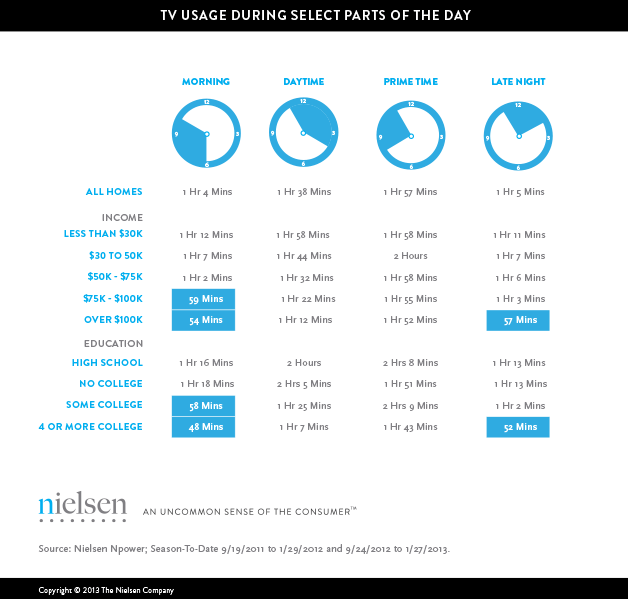Knowing when consumers are watching TV is just as important as knowing what they’re watching. Without this insight, marketers would need to schedule their advertising to run 24 hours a day to ensure they were reaching their consumers. To that end, Nielsen’s Advertising and Audiences Report tunes in to the amount of traditional TV consumers in the U.S. watch at different parts of the day, which varies greatly among different income and education levels.
Overall, the report shows that higher education and income levels were correlated with less TV usage, particularly at the early and late parts of the day. For example, homes with a head of household who did not attend college watches more TV in the morning and daytime than all other groups. This group watches an average of 1 hour and 18 minutes during the morning rush and 2 hours and 5 minutes during the day, respectively.
Conversely, the need for sleep is more important among homes with higher income and education levels. For example, homes where the head of household has four or more years of college watch an average of 52 minutes of TV during the late night and a mere 48 minutes in the morning. The average home logs an hour and 5 minutes of late-night TV daily and nearly the same amount during the morning hours.
For more information on viewership trends, download the full Advertising and Audiences report.




